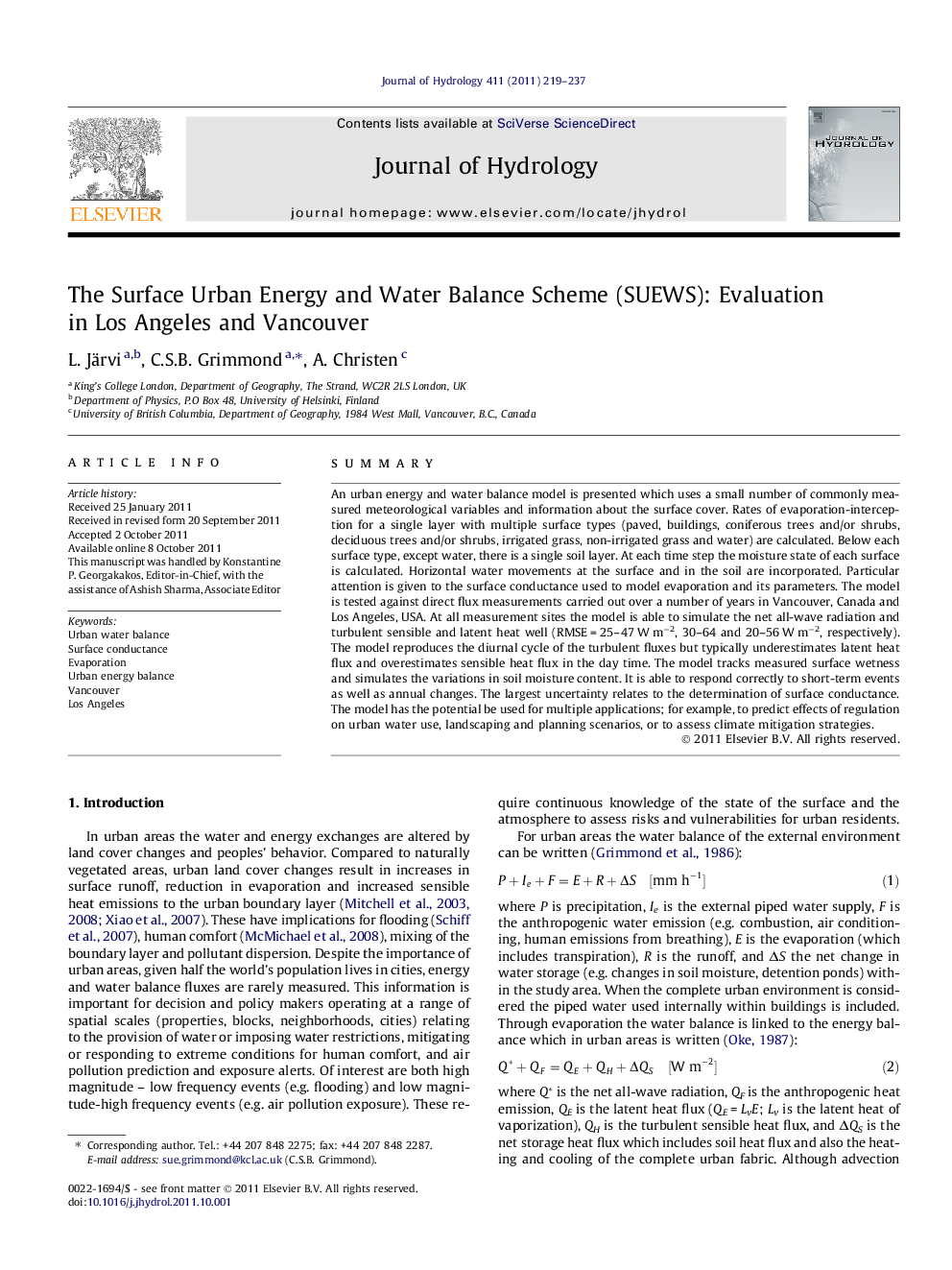| کد مقاله | کد نشریه | سال انتشار | مقاله انگلیسی | نسخه تمام متن |
|---|---|---|---|---|
| 4577328 | 1630006 | 2011 | 19 صفحه PDF | دانلود رایگان |

SummaryAn urban energy and water balance model is presented which uses a small number of commonly measured meteorological variables and information about the surface cover. Rates of evaporation-interception for a single layer with multiple surface types (paved, buildings, coniferous trees and/or shrubs, deciduous trees and/or shrubs, irrigated grass, non-irrigated grass and water) are calculated. Below each surface type, except water, there is a single soil layer. At each time step the moisture state of each surface is calculated. Horizontal water movements at the surface and in the soil are incorporated. Particular attention is given to the surface conductance used to model evaporation and its parameters. The model is tested against direct flux measurements carried out over a number of years in Vancouver, Canada and Los Angeles, USA. At all measurement sites the model is able to simulate the net all-wave radiation and turbulent sensible and latent heat well (RMSE = 25–47 W m−2, 30–64 and 20–56 W m−2, respectively). The model reproduces the diurnal cycle of the turbulent fluxes but typically underestimates latent heat flux and overestimates sensible heat flux in the day time. The model tracks measured surface wetness and simulates the variations in soil moisture content. It is able to respond correctly to short-term events as well as annual changes. The largest uncertainty relates to the determination of surface conductance. The model has the potential be used for multiple applications; for example, to predict effects of regulation on urban water use, landscaping and planning scenarios, or to assess climate mitigation strategies.
► Urban energy and water balance model uses commonly measured meteorological variables.
► Surfaces: paved, building, coniferous, deciduous, non/irrigated grass, water.
► Tested against flux measurements over a number of years in Vancouver and Los Angeles.
► Simulates well radiation, sensible, latent heat flux, surface wetness, soil moisture.
► Potential applications: effect of regulation on water use, landscaping, planning.
Journal: Journal of Hydrology - Volume 411, Issues 3–4, 9 December 2011, Pages 219–237